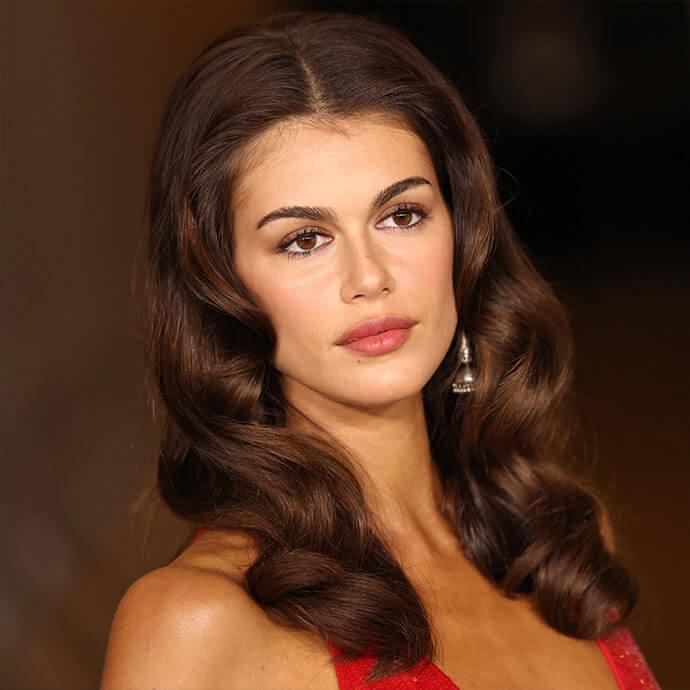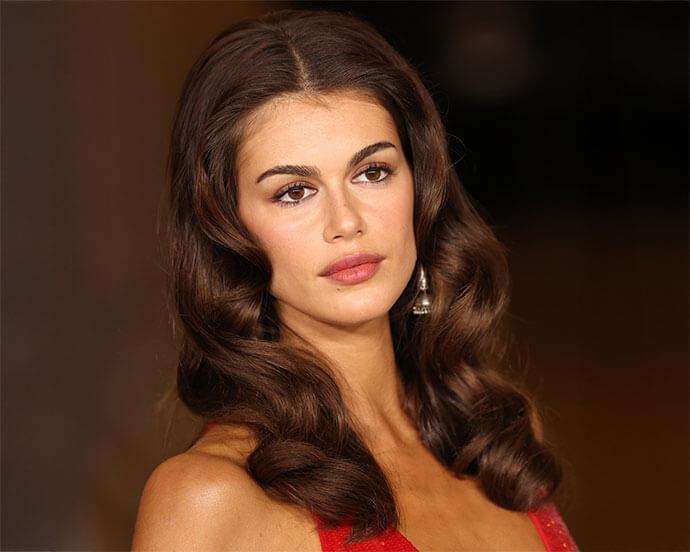12 Easy Ways to Get Rid of Greasy Hair, According to an Expert



Ashley Locke


Photo by Yana Iskayeva / Getty Images
Oily hair is a major bummer. It always seems like when you think your oil production is under control, it quickly ramps back up again and somehow even produces excess oil. Yay, you. Fine hair types tend to experience greasy hair the worst, though no hair type is safe from overactive sebaceous glands. Dry shampoo does its part, but it certainly isn’t the cure-all for an oily scalp—you need a few more hacks to get rid of your greasy hair for good. Luckily, we spoke with certified trichologist William Gaunitz, who shared his expert tips to help you control your sebum production (aka make your hair follicles produce less oil). Read on to discover what your hair needs!


It's about glam time you treated yourself.
MEET THE EXPERT
William Gaunitz, FWTS, is a certified trichologist and the founder of ADVANCED TRICHOLOGY.
1. Make Sure You’re Using the Right Hair Products
If you want to make your hair less greasy, you need to use hair products that won’t add excess oil or cause additional buildup. Dry shampoo is absolutely one of those hair-care products. You may already have one you trust, but if you need a recommendation, we love the IGK HAIR First Class Charcoal Detox Dry Shampoo. Formulated with oil-absorbing charcoal powder, it instantly sops up grease to make your hair look as good as new.
Using the right shampoo is also crucial, and we’ve even shared some of the best shampoos for oily hair. If you want something extra exfoliating, try the BRIOGEO HAIR CARE Scalp Revival™ Charcoal + Coconut Oil Micro-Exfoliating Shampoo. Binchotan charcoal gently clears your scalp and hair follicles of buildup to leave you with happy, healthy hair. For something that adds a little extra volume to flat, fine hair, we recommend the KORRES Licorice + Urtica Shampoo. Curly hair types will appreciate the cleanse you get from the IGK HAIR First Class Charcoal Clarifying Shampoo, thanks to a powerful blend of witch hazel, charcoal, and tea tree oil. Your scalp will feel free without your curls feeling as though they’ve been depleted of all hydration.
When it comes to conditioner, it’s best to stick to something lightweight that still provides some moisture. We’re big fans of the AVEDA Nutriplenish™ Conditioner Light Moisture for that very reason. Ingredients like omega-5-rich pomegranate oil, organic coconut oil, and hydrating mango butter nourish and soften your hair to leave it frizz-free and shiny. The IGK HAIR Legendary Dream Hair Conditioner is a great option for curly hair because it gives your ringlets the moisture they crave without weighing them down.
If you have oil hair, you may think you want to avoid using oils in your hair-care routine, but that’s not always the case. There are some oils that can help curb the problem. Coconut oil and argan oil tend to be too heavy for oily hair types, but tea tree oil, peppermint oil, rosemary oil, and lavender oil tend to have antifungal and antibacterial properties to keep the scalp clean of grease, dandruff, and more.
Try your best to avoid using too many styling products as these can cause product buildup, which can then lead to excess oil production. If you do style your hair, opt for silicone-free products, because silicones can weigh your hair down and make it look greasier.
2. Wash Your Hair Daily
How often you should wash your hair has been a debate since the dawn of time. Washing your hair daily may feel like overwashing to some, but Gaunitz stresses it is necessary for those who experience an overproduction of their oil glands.
“Greasy hair occurs from an excessive amount of sebum, otherwise known as scalp oil, building up on the hair shaft and weighing it down, particularly at the root,” he says. “This can happen for a variety of reasons, such as the scalp itself producing an excessive amount of sebum, or simply that you have not been washing your hair regularly enough, and the oil produced from the scalp is being built up on the hair shaft.” For that very reason, he recommends daily hair washing for those who have greasy hair.
This may only be a thing until your scalp produces less oil and your hair is no longer greasy. But until then, try washing daily to see if that changes things.
3. Be Gentle
When washing your hair, Gaunitz says to “scrub the surface of the scalp with the pads of your fingers gently”—emphasis on “gently.” And this doesn’t only apply to when you’re washing your hair. You should be gentle to your hair and scalp when you’re washing it, brushing it, styling it, etc. If you’ve ever found yourself wondering, “Why is my hair producing so much oil?” after you were quite rough with it, it could be because you overstimulated the oil glands, and they decided to produce more oil.
4. Focus on Your Scalp When Shampooing
Your shampooing efforts don’t need to extend from roots to ends. Rather, they should focus on your scalp. That is where oil production is concentrated, after all, so your time is best spent gently rubbing the pads of your fingers there rather than anywhere else. And don’t worry about applying shampoo to your ends—the product will naturally drip down there when you rinse it out.
Gentleness applies here as well. There’s no need to roughly scrub your scalp with shampoo. Go soft and slow, ensuring the shampoo can work its magic and soak up the oil before you completely rinse it out.
5. Condition Your Ends
While shampoo should be focused on your scalp, conditioner should be focused on your lengths and ends. Applying conditioner to your scalp can mess with the natural oils in your hair, causing them to become overactive and make your hair greasy. When your hair does that on its own, that’s the last thing you want to happen. So keep your conditioner off the top of your head, and apply it gently to your lengths and ends, being sure to rinse it out thoroughly before stepping out of the shower.
6. Reconsider Heat Styling
We know this may be a tough one for those who regularly use a blow-dryer for at-home blowouts, but putting down the hot tools may be in your oily hair’s best interest. Blow-drying can cause hair to look greasier than it is. Drying hair on low heat will help, but you may want to try air-drying your hair for a bit (we even have some tips on how to air-dry hair).
Straightening your hair is another culprit of making your hair look greasier. So you may want to go on a break with your flat iron until you get your oil production under control. It’s only temporary, and there are so many other hairstyles you can try in the meantime.
7. Clean Your Hair Tools
Speaking of hot tools—clean them! We’re willing to bet they haven’t been wiped down in a minute, and we know that because we also forget to regularly clean our tools. But tools that don’t get a good wipe-down end up sitting with gunk (like hair spray, hair creams, and more) on them, and that transfers to your strands and causes them to be oilier than they need to be. Think about your hairbrush specifically. You know you use that regularly, maybe even more than once a day. When was the last time you gave it a good cleaning? Those bristles are begging for some TLC. Follow our step-by-step guide to clean your brush.
8. Try Herbal Remedies
Gaunitz notes that one of the primary causes of a greasy scalp is “an increased amount of DHT being converted in the hair follicles.” What’s that, you ask? DHT is an androgen hormone commonly responsible for thinning hair that can also trigger sebum production. One of the ways to “reduce the impact of DHT on the hair follicles is by using an internal herbal DHT blocker such as saw palmetto, nettle, green tea, or pygeum,” says Gaunitz. You can enjoy these in the form of tea or supplements. Gaunitz recommends his ADVANCED TRICHOLOGY DHT Blocker with Immune Support Nutraceutical to help manage oil production and hair loss.
9. Apply a Topical Tincture
If you’d rather go straight to the source than ingest some herbal remedies, Gaunitz has some topical tinctures for you to try. He first recommends 5% azelaic acid. “Azelaic acid has been shown to shrink the size of the sebaceous gland, which decreases the amount of oil produced.”
Another recommendation from Gaunitz is black cohosh because it “can help manage excess oil in targeted locations,” he says. “The phytoestrogens coat the hair follicle receptor, which absorbs DHT and reduces the output of sebum.” These two powerful ingredients come together in the ADVANCED TRICHOLOGY FoliGROWTH Serum.
10. Work With Your Greasy Hair
For days when putting in the effort feels like too much, work with what you’ve got. There are plenty of hairstyles for greasy hair that can get you out the front door in minutes. You can try a slick-back bun or throw a hat on it—the choice is yours.
11. Consider Your Diet
What you eat has a huge impact on your hair, more than you may have suspected. “Excessive amounts of trans fats from fried food in your diet will lead to additional high levels of oil production,” Gaunitz shares. He suggests avoiding fried foods, high levels of cheese, high levels of foods cooked in animal fats, and high levels of trans fats. Opt for foods that contain essential fatty acids, like fish, avocado, and nuts. Foods that contain vitamin A, vitamin C, and zinc will also help limit oil production. These foods can include broccoli, spinach, kale, and lentils.
12. See a Dermatologist
If all else fails, make an appointment with your dermatologist. They’ll likely be able to get to the root of your problem and set you on the path to success.
Liked this post? Share!
Related Stories


Hair
6 Hair Trends Set to Take Over in 2026, From Bixie Cuts to Bouncy Blowouts
Published on Dec 5, 2025 • 5 min read


Hair
21 Easy Hairstyles to Enhance Your Natural Curls and Coils
Published on Dec 3, 2025 • 11 min read


Hair
The Ultimate Guide to Styling Short Hair
Published on Dec 1, 2025 • 11 min read


Hair
From Bangs to Blonde: The Hair Trends Taking Over 2025
Published on Dec 16, 2024 • 5 min read


Hair
Scalp Exfoliation Is the Key to Healthier Hair—Here’s How to Do It Correctly
Published on Nov 21, 2025 • 9 min read


Hair
The 10 Best Hair Masks and Conditioners to Promote Hair Growth
Published on Mar 11, 2024


Hair
20 Trendy Hairstyles That’ll Make You the Life of the (Holiday) Party
Published on Oct 15, 2025 • 9 min read


Hair
Easy Thanksgiving Hairstyles to Look Polished While You Feast
Published on Oct 2, 2025 • 6 min read


Beauty Picked Just for You
Get 5 products worth up to $70
Plus exclusive access to epic deals up to 80% off
Starting at just $14/month. Cancel anytime.